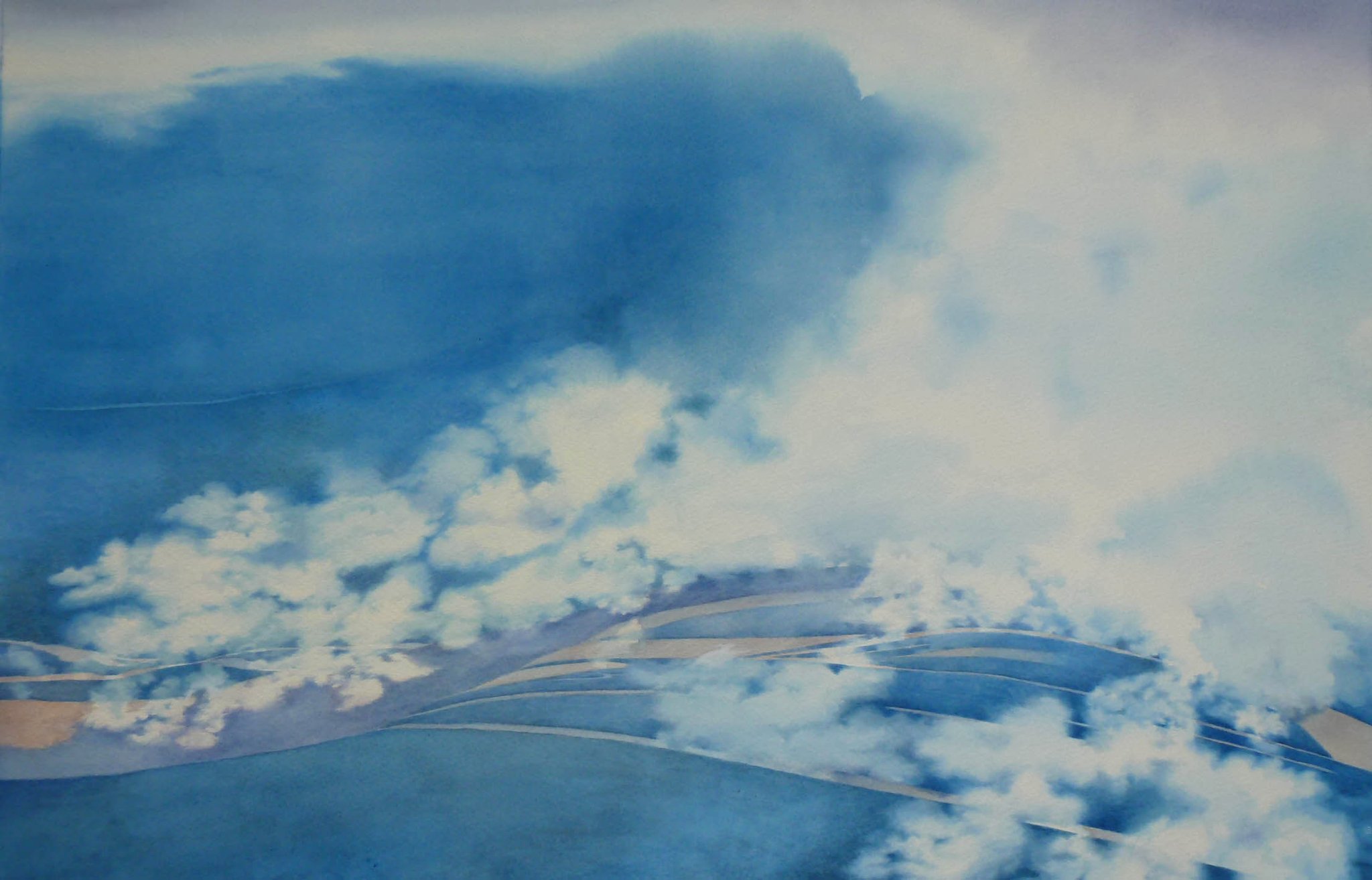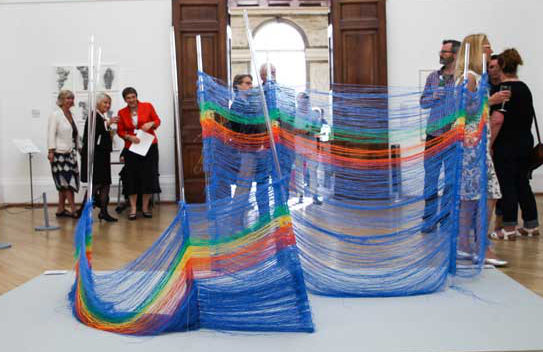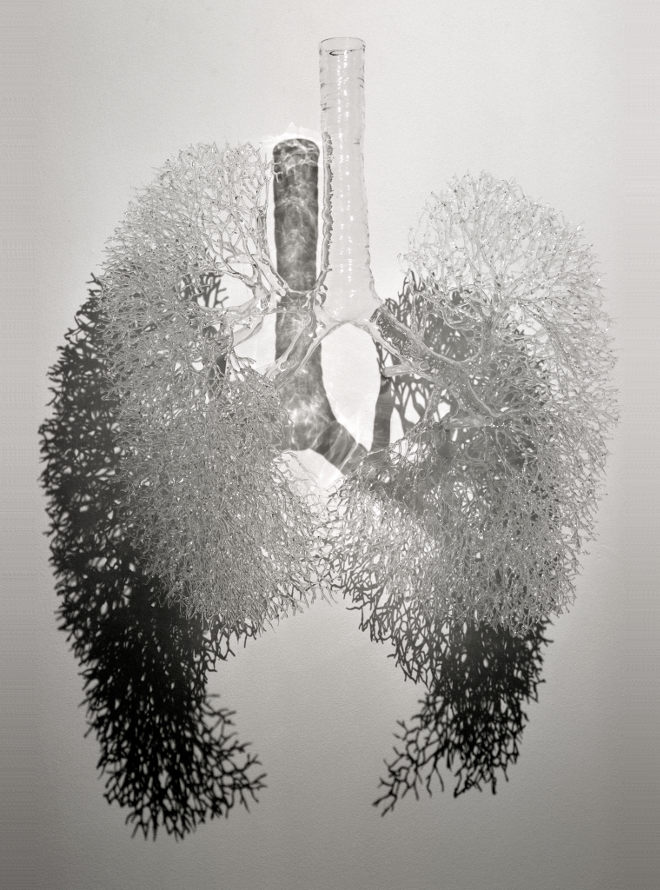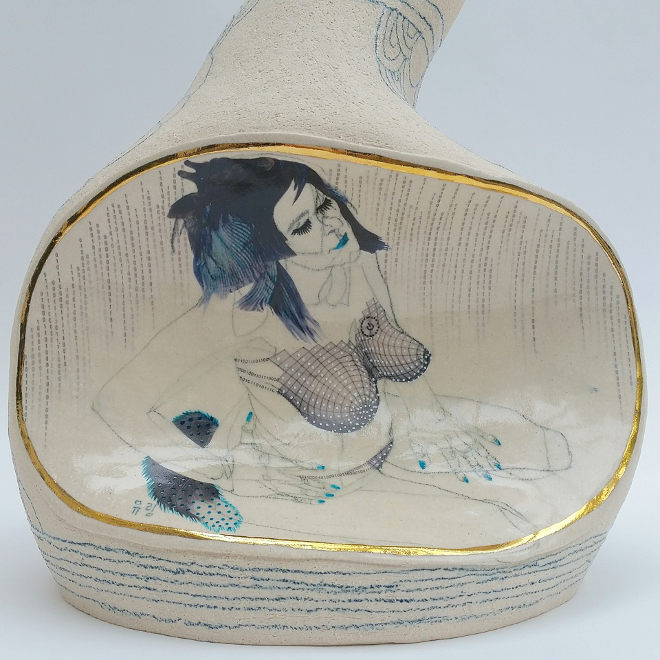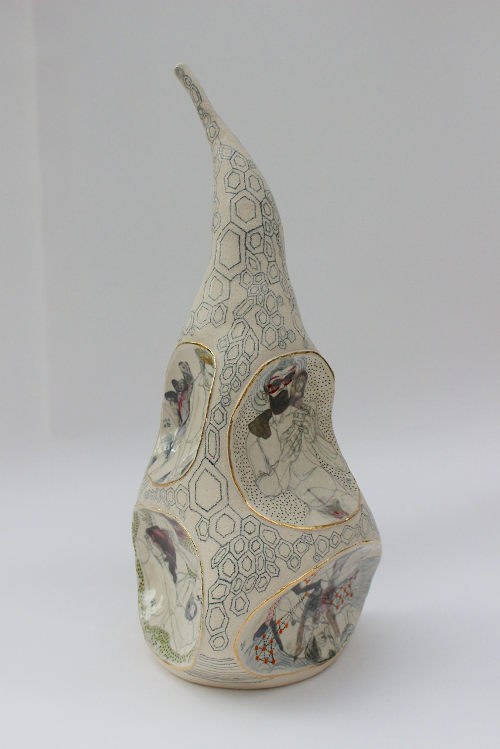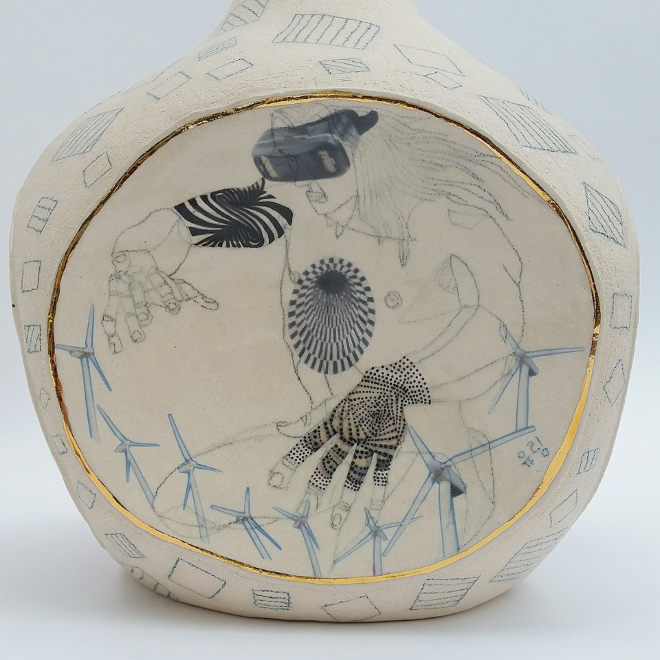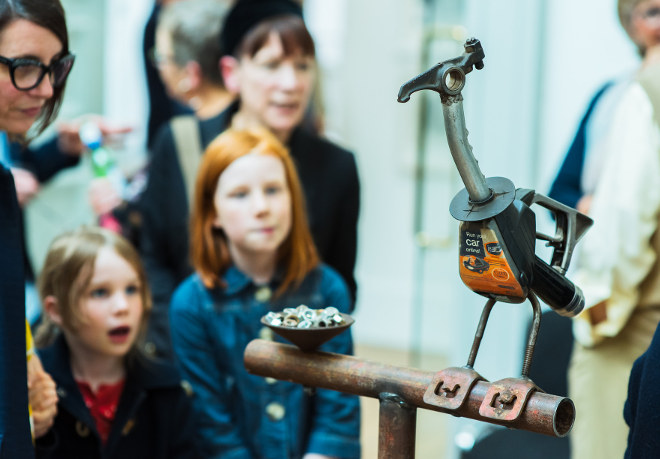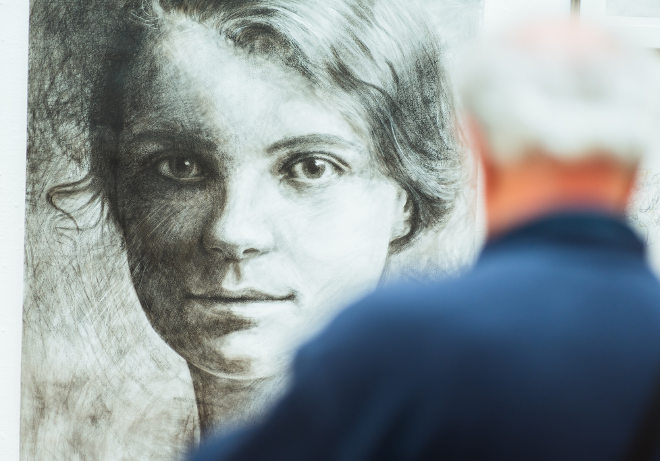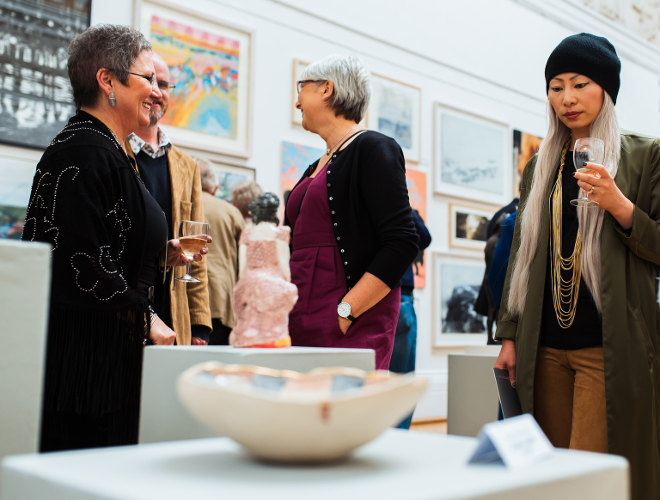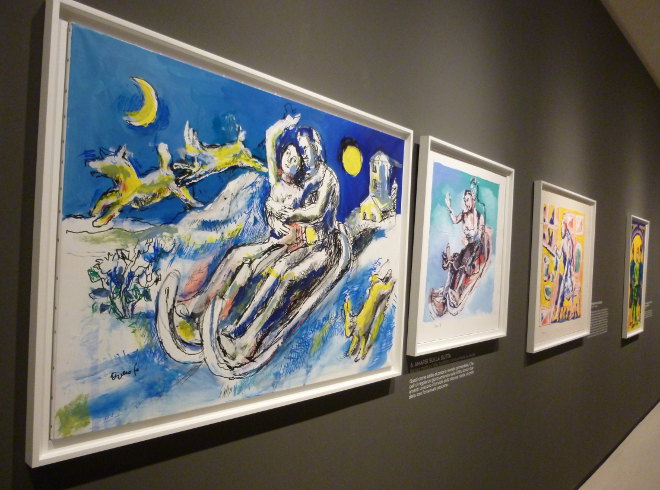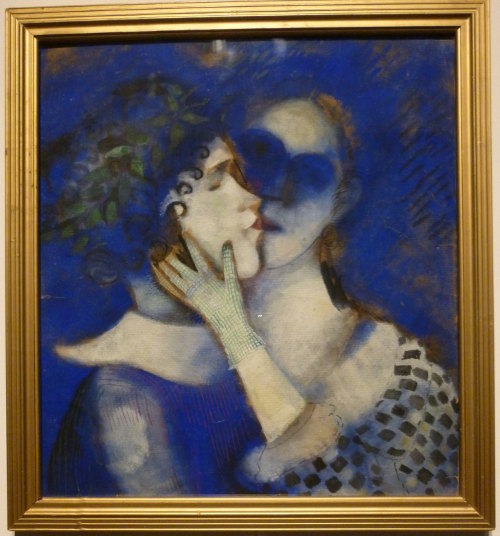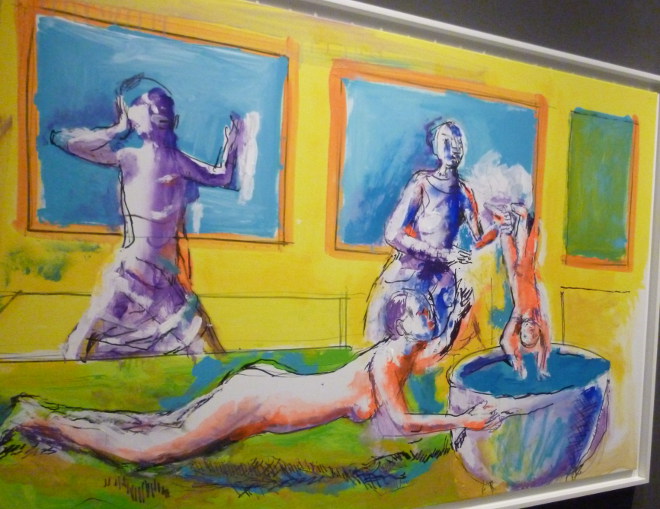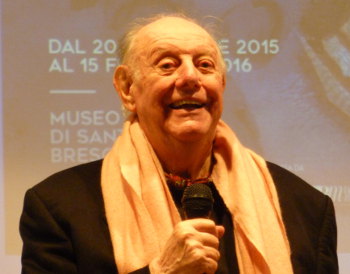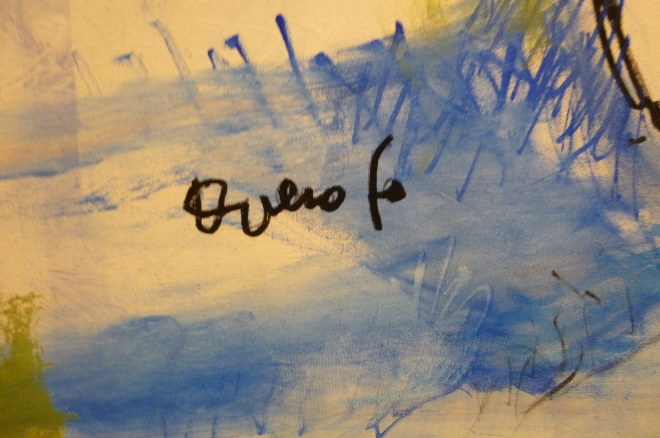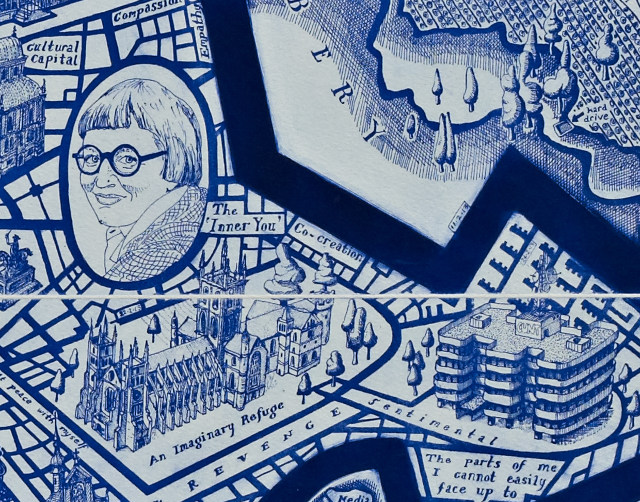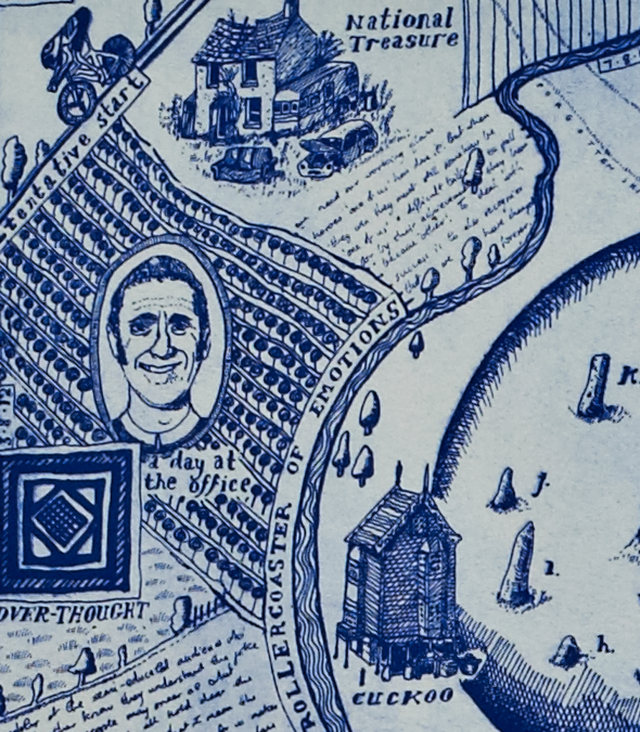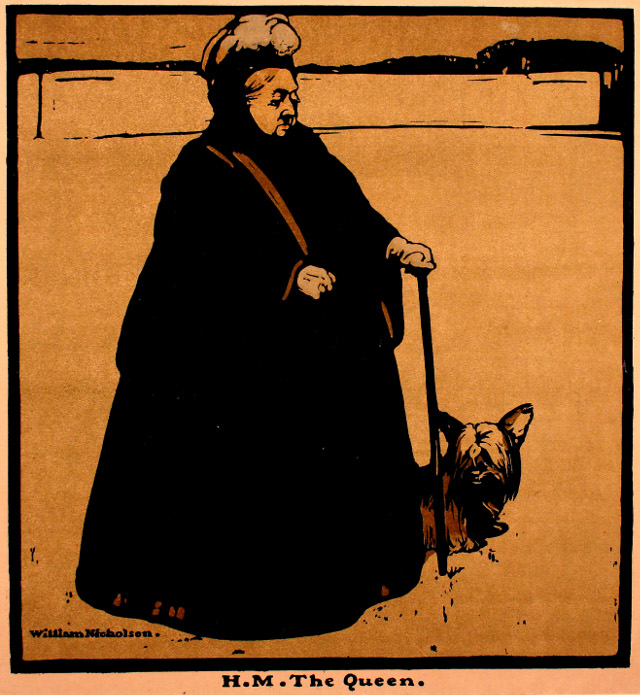If you visited RWA’s exhibition of The Power of the Sea in 2014, you’ll know how excellent their taste is in choosing works preoccupied solely with one particular element of nature.
This time around the remit was to seek out pieces that scrutinise a more intangible aspect of our surroundings – the very stuff we live in and breathe.
More than one artist on show creates a sense of substance through the presence of a balloon or several; for others, such as Jemma Grunion and her scattering of oils and resins layered on board, it’s the clouds that transform the unseen into the visible.
You’ll see sculptures representing curls of sky and swooping birds, anamorphic landscapes by Polly Gould, clouds created on tracing paper through the art of rubbing out, a glass trombone and an avian flu molecule. There’s even a depiction by L.S. Lowry of early 20th century air pollution – it’s clear that air resonates with countless possible interpretations – from freedom to sound.
The exhibition itself is beautifully laid out, allowing space to meander and contemplate as light streams in through the main galleries’ lovely and very appropriate skylights. Through four centuries of work, there’s an overriding sense of humanity marvelling at the things that soar so high above us, and of the desire to enter, investigate and conquer this nebulous territory. Artworks focused on flight abound, and a colourful windbreak made from shredded plastic by artist Freya Gabie wafts gently in the breeze.
Other works offer an altogether more intimate examination of our relationship with air, not least in Capacity by Annie Cattrall, made in part using exhalations of human breath. Just knowing that gives me delighted chills.
For me, the sky has always seemed to be our very best art gallery, offering up colour studies, sunset silks and endlessly reconfigured sculptures. To host an exhibition concentrated on this extraordinary theatre of the atmosphere is an act of audacity.
As an added bonus, you’ll find Arctic Air, an exhibition by Janette Kerr PPRWA RSA (Hons), made in response to three weeks on a ship sailing up the coast of Svalbard, Norway. The works are compressed with layers of wonder, representing Janette’s awe at encountering icebergs and glaciers, and thinking of “the hundreds, even thousand, of years locked inside, suspended in tiny air bubbles.”
Just like the exhibition in the upstairs galleries, this is a contemplation of a part of our planet so otherworldly that it almost feels off-world…
And yet this element is what enters our body and fuels all our vital internal churnings. Without it we could not exist, let alone create and appreciate art.
Air: Visualising the Invisible in British Art 1768-2017 is on at RWA in Bristol until 3rd September 2017. Find details at http://www.rwa.org.uk/whats-on/air-visualising-invisible-british-art-1768-2017. All images in this post have been supplied by RWA.

